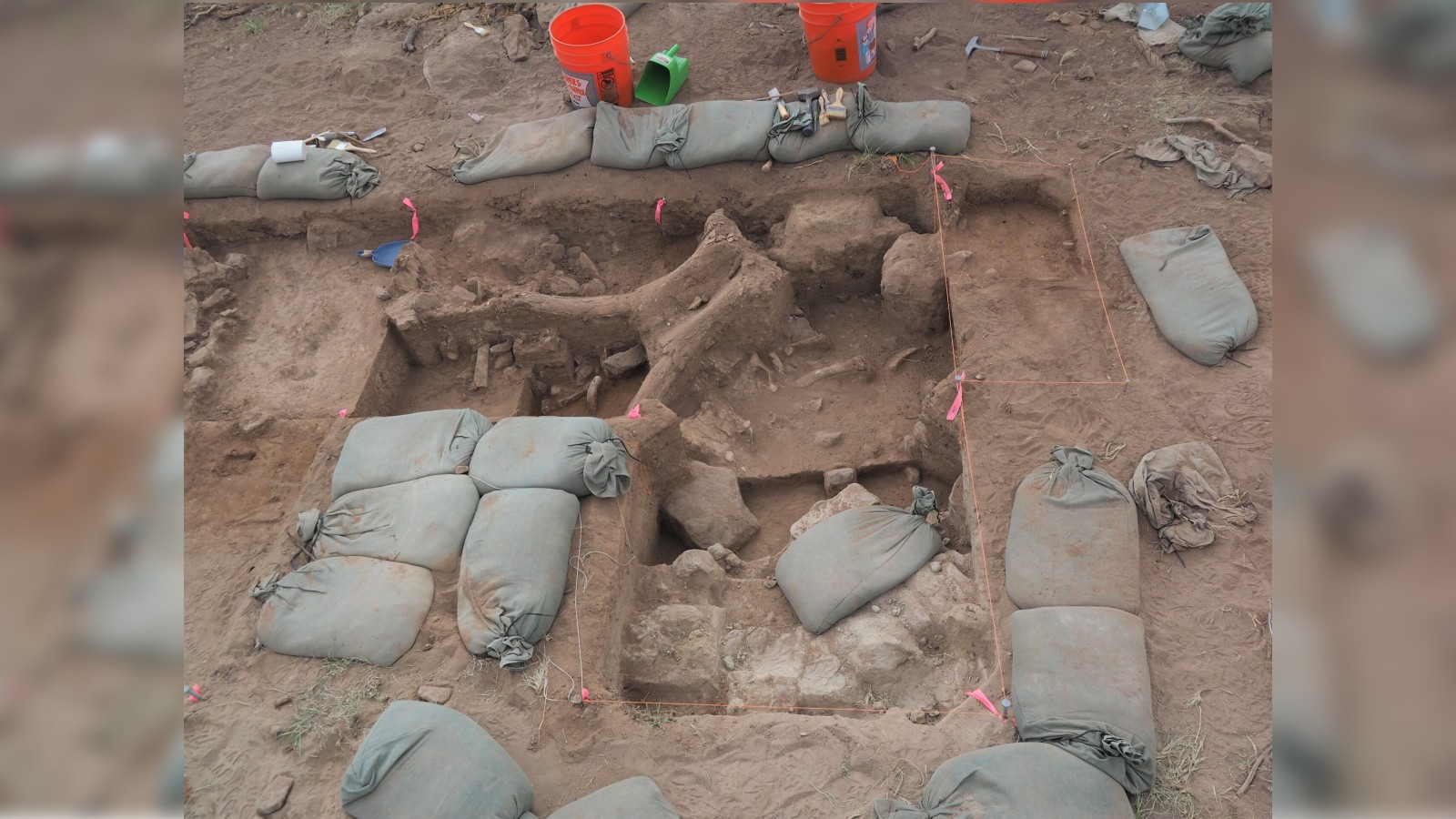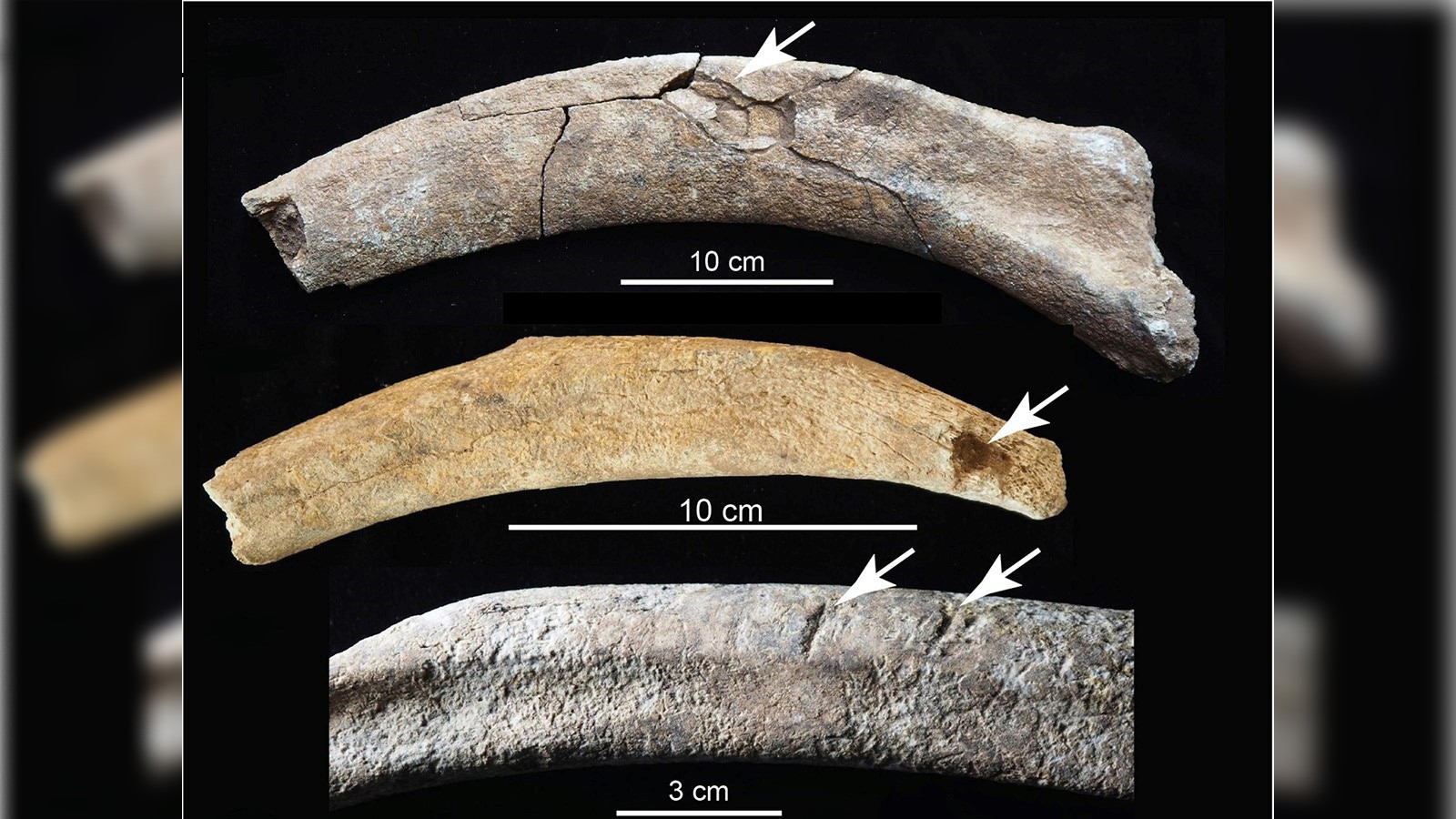37,000-year-old mammoth butchering site may be oldest evidence of humans in North America
But some experts are skeptical about the new findings.
A 37,000-year-old mammoth butchering site, uncovered in New Mexico, might be the earliest evidence of humans in North America, controversial research finds. Some of the bones at the site show signs of being handled by humans or even being used as tools, which is "some of the most conclusive evidence" yet that humans settled in North America much earlier than experts previously thought, according to the new study.
If the team is correct about human activity at the site, it would almost double the amount of time humans have occupied North America. However, determining the exact date that people first appeared in North America has been a controversial subject over the past few decades, and similar studies have been dismissed as inconclusive. Some experts are similarly skeptical of the conclusions the team has drawn from the mammoths' remains.
The new site was discovered on the Colorado Plateau in northern New Mexico, after hiker Gary Hartley spotted a chunk of tusk protruding from the surface. Researchers named the site the "Hartley mammoth locality" in his honor.
An excavation of the Hartley site revealed the incomplete remains of two mammoths, believed to be an adult female and a juvenile. Most of the bones were grouped in a large pile, with the adult female's skull lying on top. By carbon-dating collagen in the bones, researchers estimated the remains could date to between 36,250 and 38,900 years ago.
Related: 'Ghost footprints' left by ancient hunter-gatherers discovered in Utah desert
Some of the bones appeared to have been crafted into makeshift knives, possibly used to butcher the mammoths, the researchers said. Other bones showed signs of being broken by blunt-force trauma, possibly from using rocks, which were also found in the pile of bones. There were also puncture marks in some of the mammoths' ribs, possibly resulting from humans' attempts to glean at the valuable nutrients inside.
Tiny particles found in the sediment surrounding the bones also included crystallized ash from what researchers suspect was a fire, possibly used to cook the mammoth meat as well as other small animals.
Get the world’s most fascinating discoveries delivered straight to your inbox.
"What we've got is amazing," lead study author Timothy Rowe, a paleontologist at The University of Texas at Austin, said in a statement.
When did the first Americans arrive?
Until the early 2000s, archaeological evidence had suggested that the Clovis people — a group of early humans who can be identified through distinctively shaped weapons — were the first humans in North America, arriving around 13,000 years ago. But more recent finds have revealed that there was likely a genetically separate group of humans, known as pre-Clovis people, living in North America before the Clovis people arrived.
It is now firmly established that the pre-Clovis people were the first humans to live in North America, and they can be reliably traced back to around 16,000 years ago, Justin Tackney, an anthropologist at the University of Kansas who specializes in the human settlement of the Americas and was not involved in the study, told Live Science in an email.
This time frame suggests that the pre-Clovis people arrived in North America after the end of the Last Glacial Maximum (LGM) — the most recent period when ice sheet coverage across Earth was at its greatest extent, between 26,500 and 20,000 years ago. The melting ice sheets likely provided the pre-Clovis people with an opportunity to cross the Bering Land Bridge, a piece of land that once connected North America and Asia.
However, a number of recent contentious studies have claimed that the pre-Clovis people may have dated even further back, potentially to before the LGM. But this idea has been "a much bigger pill to swallow" for most experts because the evidence from these studies is inconclusive, Tackney said.
A 2017 study investigating a similar pile of mammoth bones at a site near San Diego revealed that the bones may have been handled by humans and could date back to around 130,000 years ago, suggesting humans may have been around more than 10 times longer than previously believed. However, critics argued that the bones' unusual orientation and "wear and tear" could also be explained by natural processes and were not definitively human-caused.
Related: Woolly mammoths survived on mainland North America until 5,000 years ago, DNA reveals
In 2020, another group of researchers claimed to have found unusually shaped rocks in a Mexican cave that may have been used as stone tools and date to around 30,000 years ago. But another study, published in 2021, cast serious doubt over whether the shape of the rocks indicated they were human-made.
These types of studies can be problematic because the evidence does not definitively point to humans. Instead, humans are just one possible explanation. This means researchers are often creating a narrative to fit the evidence, rather than the evidence clearly pointing to what really happened.
"People in our field usually err on the side of caution, and the simplest explanations are preferred," Tackney said. "In that sense, I am always extremely skeptical of reports from sites like these."
Until now, the most conclusive evidence of a pre-LGM settlement for pre-Clovis people comes from a 2021 study, which revealed a set of 60 bare human footprints uncovered at White Sands National Park in New Mexico. The fossilized tracks date to between 21,000 and 23,000 years ago based on organic material trapped inside the footprints, which suggests pre-Clovis people may have moved into North America before or during the LGM. But this discovery has not been enough to settle the debate.
New evidence
In the new study, researchers analyzed the bones found at the Hartley site using a number of techniques, including high-resolution CT scans and scanning electron microscopy.
These analyses revealed that a handful of the bones displayed signs of being fractured by blunt-force trauma, including, most notably, the adult's skull. Most of the ribs showed signs of being snapped off the vertebrae and some had puncture marks that the researchers think could have been made by humans to extract fatty marrow from inside the bone, according to the study. At least one rib bone also shows signs of cut-like marks that could have been left by humans.
"There really are only a couple efficient ways to skin a cat, so to speak," Rowe said. "The butchering patterns are quite characteristic."
The team also identified around a dozen bone flakes, smaller bone fragments with sharp edges, that the researchers think could have been used as knives to cut through the mammoths' meat. There were also many more microflakes, measuring less than 1.2 inches (3 centimeters) long, that could have been created as a byproduct when the bones were turned into makeshift knives. Not all of these flakes and microflakes can be attributed to individual bones, but there is evidence they were carved either perpendicular or parallel to some of the bones, suggesting they were not randomly created by natural processes, according to the study.
A large boulder and several fist-size rocks were also found among the mammoth bones, which the researchers think could have been used to help fracture and break the bones.
The team also found potential evidence of a controlled fire at the site. In the sediment, there were tiny particles of crystallized ash, similar to those found within ancient fireplaces from past studies. Chemical analysis of the particles suggests that they were formed in a controlled fire and not from a much more powerful wildfire or ancient lightning strike. There were also bone fragments from smaller animals and possibly even fish scales, suggesting that humans may have cooked more than just mammoths at the site.
However, some experts remain skeptical.
"The researchers certainly have a solid date for the death of the mammoths, but they lack definitive evidence of human activity," Lauriane Bourgeon, an archaeologist at the University of Kansas who specializes in ancient animal bones, including mammoths, and was not involved in the study, told Live Science in an email. "The role of natural factors also cannot be definitively ruled out."
It can be very hard to attribute human activity to ancient bones because natural processes — like weathering, trampling and sediment layering — can cause similar types of damage to the bones, Bourgeon said.
Without clear and unambiguous tool use or human remains, it is almost impossible to conclusively prove the damage was caused by human activity, Bourgeon said. The stones found inside the mammoth pile and the bone flakes are not sufficient to confirm tool use, she added.
"I think this is going to remain another controversial site," Bourgeon said.
The researchers acknowledged that some experts might be skeptical of their findings, especially when analyzed individually, but they believe that combining all of the evidence found at the Hartley site paints a clear picture of human activity.
"It's not a charismatic site with a beautiful skeleton laid out on its side," Rowe said. "It's all busted up, but that's what the story is."
The study was published online July 7 in the journal Frontiers in Ecology and Evolution.
Originally published on Live Science.

Harry is a U.K.-based senior staff writer at Live Science. He studied marine biology at the University of Exeter before training to become a journalist. He covers a wide range of topics including space exploration, planetary science, space weather, climate change, animal behavior and paleontology. His recent work on the solar maximum won "best space submission" at the 2024 Aerospace Media Awards and was shortlisted in the "top scoop" category at the NCTJ Awards for Excellence in 2023. He also writes Live Science's weekly Earth from space series.






